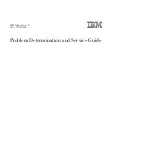
3.
The DOCSIS MAC header is removed and another header is added, which includes the SID, the
upstream port information, and status bits that indicate whether any errors were detected.
4.
The packet is sent across the backplane to the forwarding processor (FP) or the routing processor (RP)
on the route processor.
5.
The route processor performs packet operations such as access list processing, classification, switching,
and QoS. It is also where major routing and IOS management functions (filtering) are run.
6.
The packet is moved to the correct output queue and transmitted over the backplane to the network uplink
card (Ten Gigabit Ethernet) or another cable interface line card.
7.
The output card forwards the packet to the next interface point.
Downstream Data Path
The following example describes the downstream data path.
1.
Data packets from the Internet are received by the network uplink cards (Ten Gigabit Ethernet).
2.
The packets are forwarded to the forwarding processor (FP) on the Supervisor module.
3.
The FP performs MAC classification to determine the type of frame or packet to be processed.
4.
The route processor performs access list filtering, policing, and marking.
5.
The route processor performs a forwarding information base (FIB) lookup and rewrite.
1.
The rewrite consists of a downstream header and 802.3 MAC header.
2.
The downstream header contains destination primary SID, physical DS port number, PHS rule index,
and some control bits and other fields.
3.
The packet is policed, shaped, and prepared for queueing. Queueing is based on the priority of the
queue and the state of the flow bits from the card. The destination card address (port) is pre-appended
on the header of the packet being transmitted.
6.
The packet is transmitted over the backplane to the appropriate cable interface line card.
7.
The cable interface line card receives the packet and forwards it to all the ASICs on the line card.
1.
Each ASIC decodes the header to determine if the packet is destined for one of the downstream ports
on that card. If so, the downstream header is removed and the 802.3 MAC header is saved.
2.
The MAC header is processed to determine how to build the DOCSIS MAC header and what operations
to perform on the packet. These might include pre-appending the DOCSIS MAC header, computing
the HCS and FCS, performing Packet Header Suppression, and BPI encryption.
8.
After the packet is ready, it is immediately transmitted on the downstream.
Cisco Converged Broadband Routers Hardware Installation Guide
3
What is a Cisco cBR Series Converged Broadband Router
Downstream Data Path



































